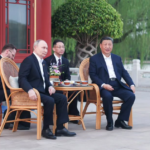FROM the onset, the British Empire, initially through the East India Company (EIC), was founded on, and steeped in, corruption. As the first part of this series showed, Robert Clive, was among the pioneer of the “Nabob Game”, which enabled the Company’s employees to garner “power and wealth in India”, largely through “bribery, extortion, coercion, threats, and force”. It was illegitimate, as also legitimate, flight of capital from India to Britain. Latest estimates put the figure at a humungous $45 trillion over two centuries.
The game of capital flight was finessed, changed, and manipulated over the past 100 years, and gained fresh currency and shape since the 1960s. This was when Indians mastered the art and science of managing bank accounts in heavenly tax havens such as Switzerland, Mauritius, Cyprus, Panama, and several others. Foreign trade, i.e. exports and imports, proved to be foundation for the massive, but initially one-way, flow of wealth by rich Indians, who included businesspersons, traders, politicians, civil servants, professionals, and landed aristocracy and feudal lords.
Hawala, which was the twisted form of the old “Hundi” system, was another favourite route. You could pay cash to a Hawala trader in Delhi, Mumbai, and Vizag, and he would transfer the amount to an account in a tax haven. In many ways, as was the case during the British Raj, gold and diamonds emerged as a safer way to easily take money out of the country. For the India-based foreigners, opaque transfer pricing between the foreign parents and Indian subsidiaries was the preferred route. It was akin to foreign trade, only the transfer of goods and services happened within a group.
Over the decades, the nature of the Hawala dealer, notion of tax havens, and the contours of the diamond trade, changed. The first one is no longer an uneducated, paan-chewing, and stocky person dressed in traditional clothes. He (and now there are a number of she too) has morphed into a suave, well dressed, and English-with-an-accent personality, who wears chic clothes tailored abroad. He operates from swanky buildings in swankier malls, and stores the cash in designer bags and suitcases in warehouses in farmhouses.
Until the early 1980s, Indians’ choice of tax havens were the traditional, stable, and dour ones like the banks in Switzerland. They were used to hide the ill-gotten wealth, with minimal interest, until it was required to finance foreign visits, purchase of foreign properties, or to pay bribes to grab local and global contracts. Once the economy was partially liberalized by the Rajiv Gandhi regime, starting from 1984, there was a search for nimbler, smaller, and flexible tax havens so that money could be profitably routed and re-routed.
In a recent report, the Paris-based Financial Action Task Force, a global body that aims to combat money laundering and terror finance, cited cases where Indian importers in Surat and Mumbai inflated the prices of imported diamonds from Hong Kong and China. Don’t forget that Hong Kong is the financial hub of money laundering, along with Dubai, London and others. The high value of the stones, compared to their sizes, enables smuggling. The stones, or their cash value can then be deposited in tax havens.
Dupleix’s duplicities, Clive’s clivities
Like in the case of French and Dutch companies, one of EIC’s unstated charters was “private trade”. Apart from the global trade in the name of the Company, its employees – from the junior to senior-most – openly amassed personal wealth. The essence and bedrock of such deals lay in unbridled dishonesty and corruption. In the Encyclopedia of India, the editor Stanley Wolpert wrote that it involved “bribery, violence, and treachery”, which “might be overlooked” by the EIC. But it also implied the “defrauding of the East India Company investors”, which could not be ignored by the Company.
Initially, the employees could happily bring back goods on the same ships that they travelled in. Each trip to India, and East Asia was a round trip. They were not even charged freight. The EIC internally rationalized “private trade” as one that recognized the “entrepreneurial spirits of their servants”, and which “exposed new markets (regions and products) from which the Company could also profit”. In addition, it allowed EIC to keep costs down in terms of salaries and other employees’ perks.
Over time, however, the inherent and implicit conflicts of interest were apparent, and debated publicly. First, as private trade grew exponentially, it hurt the Company’s per-voyage and annual profits. This was unacceptable to the investors, who financed the trips, and expected attractive returns. Two, the so-called servants could negotiate cheaper prices for their private trade, and agree to pay a bit higher for the larger volumes purchased on EIC’s behalf. Three, they could demand bribes and kickbacks from the suppliers.

FOUR, the employees could buy smaller, more expensive items on their behalf, and leave the Company to deal with the bulkier ones. Finally, and which was the most crucial, there was the double-dealing aspects to the transactions. A clampdown on private trade was imposed after Clive’s return to England, and the resultant infamy. This was also necessary because the nature of the trade changed—now the employees merely wanted to shift cash and expensive gifts back home, and not the products that they could sell.
To carry them on one’s person, or through friends, was fraught with problems for obvious reasons—theft and cheating. Earlier, EIC eased this problem as it acted as an exchange conduit, like today’s moneychangers, in lieu of a fee. Employees used the Company’s bills of exchange, which were like modern financial instruments, to receive the money in Britain. Figures indicate that the employees received millions of pounds annually through these routes. India emerged as a quick-fix destination to riches. Finally, one of the solutions was found in diamonds and other precious stones.

THOMAS Pitt, the Governor of Madras, was among the first to discover the potential of the stones. In 1702, he purchased a 400-carat diamond for Pounds 24,000, and shipped it to Britain. Instantly, “wild rumours” surrounded it. According to EIC’s historian, John Keay, it was reported that the diamond was “snatched from the eye socket of a Hindu deity or smuggled from the mines by a slave who hid it in a self-inflicted gash in his thigh”. After a few years he sold it for Pounds 135,000, or a profit of Pounds 111,000. Thereafter, Company’s employees “accumulated an elaborate knowledge of the diamond trade, using that knowledge to maximize their profits”.
Sons wrote to their fathers about the Indian potential. For example, in his paper, Tillman W. Nechtman cites the example of Richard Barwell, who admitted to his father in 1765, “India is sure path to competency. A moderate share of attention and your being not quite an idiot are ample qualities for the attainment of riches.” Parents desired to send their sons to India. One father, whose son wasted his life on “loose women” and “excessive drinks”, sent him to the land of riches. The former’s advice: “cut off half a dozen rich fellow’s heads… and so return a Nabob”. Clive was one such spoilt son.
However, more than Clive, the French Governor-General in India of the French East India Company, Joseph Francois Dupleix, was the pioneer in Nabob-ism. His policy was focused on fortune, rather than power, unlike the Englishmen, who “turned on that on its head”. As Wolpert puts it, “It is doubtful Dupleix sought anything more than commercial and strategic advantage”. He did take sides in Indian battles between local kings, but didn’t transform the winners into puppets or “instruments of French policy”.
Don’t miss the invoices
Like the British in the eighteenth and nineteenth centuries, Indians faced similar problems—how to transfer huge wealth, earned both honestly and dishonestly, in secrecy? There was obviously a huge difference—the former wanted to take it home, and the latter to whisk it away, and hide it in foreign tax havens. Foreign trade, as was the case with the British initially, promised to be the easiest route. All that the Indians had to do was to bloat their imports, and understate the exports. This is what most did between 1947 and 2019.
The strategy is simple: when you over-invoice the imports, or contend that they were costlier than what they were, you pay extra to the vendor, who quietly transfers the difference to your secret and foreign bank accounts. When you do the opposite with exports, the foreign buyer transfers the difference—again to your bank accounts. This is the traditional mis-invoicing of trade. However, over-invoicing of exports, and under-invoicing of imports, i.e. the opposite of what is generally assumed, may also indicate indirect capital flight.
When you exaggerate your exports, you pay more than what you need to. Why will you do such a stupid thing? For the simple reason that it allows one to legitimately bring back the black money stashed abroad. In the days when there was no export tax, it could be done in a tax-free and hassle-free manner, with no questions asked. It is really simple: you get $20 for something that costs $10. The difference of $10 comes from your secret accounts. This is black money, which turns into white instantly.
ANOTHER important reason is the benefits doled out to exporters. In the past few decades, exports were linked with import licenses either to buy raw materials, if required, or just as incentives. In some cases, the benefits were more profitable than the cost of over-invoicing imports. If one had secret, but illegal, foreign accounts, it turned out to be a double-profit mechanism. Two examples will suffice to explain how the system worked—nylon for polyester scheme in the 1970s, and VABAL licensing in the 1990s.
In the late 1960s, the government awarded exporters of nylon with imports of polyester yarn, which sold at 400 per cent premium in India. Since imports were calculated as a percentage of exports, the higher the volume of the latter, the more profits one could make from polyester. In fact, even if someone sold nylon at a loss, or merely dumped the material in open seas, he could earn huge profits. In the latter case, a consignment of `100 of nylon would allow imports of `50 of polyester, which sold at `200. If the nylon seller got `100 in India through Hawala at 15 per cent commission, he spent `115, but earned `200 through polyester.

Now, consider the dynamics, if the exporter had money stashed abroad. He dumped the nylon, or sold it at a huge loss. He got `100 through his foreign accounts, and the money became legal. He got polyester import licenses for `50, which sold for `200. A profit of `150, and money laundering of `100! A win-win! The VABAL scam was similar—merely substitute plastics for nylon, and plastic raw materials like HDPE and LDPE for polyester.
Understating the value of imports also indicates a form of capital flight. This is generally done to evade the unusually high import tariffs, and quota restrictions imposed by the government to save foreign exchange. Overall, this may include smuggling of goods, which are not reflected in the official figures. In both cases, there is a component of capital flight since money has to be paid to overseas sellers illegally, either through Hawala or secret accounts.
A study by Meenakshi Rishi and James K. Boyce found that India witnessed the twin case of exports over-invoicing and under-invoicing of imports between 1971 and 1986. In 1986-dollar terms, the total capital flight on these two counts totaled $21.1 billion; adjusted for interest earnings, “cumulative capital flight in the period amounted to $28.6 billion”. The two figures amounted to 43 per cent and 59 per cent, respectively, of the country’s outstanding external debt in 1986. The authors admit that even these figures may be understated.
IN a study, Ila Patnaik and Deepa Vasudevan found that export under-invoicing between 1990-91 and 1996-97 “amounted to $8.37 billion”. In addition, during the same period, imports were over-invoiced by $8.2 billion. “In all, $16.6 billion of capital fled the country through the trade mis-invoicing route,” concluded the study. Thus, they maintained that the economic reforms in the 1990s encourage the “movement of capital through illegal routes”. This was because India opened up capital account for foreigners, but not for Indians.

A few years ago, the US-based think-tank, Global Financial Integrity, estimated that India lost $13 billion, or more than `90,000 crore, due to trade mis-invoicing in 2016. Of this, $4 billion was due to illegalities in exports, and the remaining in imports. Yet again, under-invoicing of imports was the prevalent modus operandi, and the nation lost $9 billion, which was broken down into: $2 billion in “uncollected customs duties”; $3.4 billion as “uncollected VAT”, and; “uncollected corporate income tax” of $3.6 billion.
Don’t forget kickbacks
In 1960, the Indian Companies Act was amended to allow companies to contribute up to five per cent of their net profits to political parties. The right-wing and conservative business families in the country used it to support parties with similar mindsets—Jan Sangh, Swatantra Party and rightist elements within the Congress, especially the leaders who comprised the Congress Syndicate. After the split in the Congress in the 1960s, the move to ban political donations gathered speed. Justice Rajendra Sachar, in a piece in Mainstream, contends that Madhu Limaye, the Socialist MP, was the dominant voice for banning corporate funding.
“The statement and objects of this amendment were given as follows: A view has been expressed that such contributions have a tendency to corrupt political life and to adversely affect healthy growth on democracy in the country, and it has been gaining ground with the passage of time. It is, therefore, proposed to ban such contributions.” Thus, Indira had made it impossible for her opponents to legally use moneybags of big businesses and privy princes against her.
More importantly, she changed the dynamics of the relationship between money and politics. India Inc realised that it was dependent on the government to both access funds (loans from government-owned banks) and grab licenses. Being close to the government was the only option left for it to survive, thrive, and grow. Thanks to the ban on political contributions, political parties understood that they would need to raise money either illegally, or establish new mechanisms to fight future elections.

Explains a former journalist, “Indira wanted to starve political parties of resources; she wanted to make it more expensive for everyone to fight elections.” However, being in power, she set up new systems for herself, her loyalists, and Congress to raise money illegally, but effectively. More importantly, she controlled them. An insightful incident epitomizes this transformation.
“Before the 1971 elections, she called her senior party colleagues and told them that she needed money to fight the elections. The money was duly delivered to the party, which resulted in a major victory,” reveals a journalist-cum-PRO. However, later the prime minister found out that the actual money that was raised was ten times the amount she got. The remaining 90 per cent was ferreted out of the country into the secret accounts of Congressmen.
“That’s when she became extremely distrustful of all politicians, especially since she was always insecure about her post as the PM. When she realised that the money that wasn’t given to her had moved into bank accounts in tax havens abroad, she imposed the Foreign Exchange Regulation Act in 1973 to stop her colleagues and opponents from using the money against her in the next elections. This is what she really meant when she kept referring to the ‘foreign hand’ in the 1970s; she just wasn’t talking about interference from other countries like the US in the country’s domestic affairs.”
SIMULTANEOUSLY, Indira went about to institutionalise corruption in a manner that the controls over illegal funds remained with her loyalists. Foreign public trade, largely through public sector and government institutions held the key. A renowned Delhi-based lobbyist explains the modus operandi to raise funds abroad to counter the monies stashed away by other politicians. .
“After 1971, Indira’s loyalists led by her kitchen cabinet divided the world among a few global businessmen-middlemen of Indian origin to handle global government contracts and the resultant kickbacks and commissions. The standard commission was 7 per cent. A London-based businessman handled the affairs in the UK and the US; a family involved in global arms deals looked after Continental Europe, and; the USSR was handed over to a third family.
“When any public global contract—be it for wheat imports or to buy guns—was discussed, the potential suppliers were informally asked about the value of the deal. All of them were then asked to open a letter of credit (LC) for 7 per cent of the total amount in a bank in a tax haven. After the contract was finalised, months or even years after the initial discussion, the LC of the winner was encashed. The rest were allowed to lapse. The winner, therefore, transferred the bribes to the corrupt officials.”
Obviously, such kickbacks, bribes, and commissions in official trade, both in huge imports and exports deals, sought the heaven of tax havens. So was the case with the differences in mis-invoicing by private businessmen. Hence, by the 1970s and 1980s, the secretive financial world of tax havens became the most-sought-after one for most of the corrupt Indians. This proved to be the worst kind of hell for the Indian economy and society. Things were about to change for the worst in the 1990s.
Alam Srinivas is a business journalist with almost four decades of experience and has written for the Times of India, bbc.com, India Today, Outlook, and San Jose Mercury News. He has written Storms in the Sea Wind, IPL and Inside Story, Women of Vision (Nine Business Leaders in Conversation with Alam Srinivas),Cricket Czars: Two Men Who Changed the Gentleman's Game, The Indian Consumer: One Billion Myths, One Billion Realities . He can be reached at editor@gfilesindia.com




























































